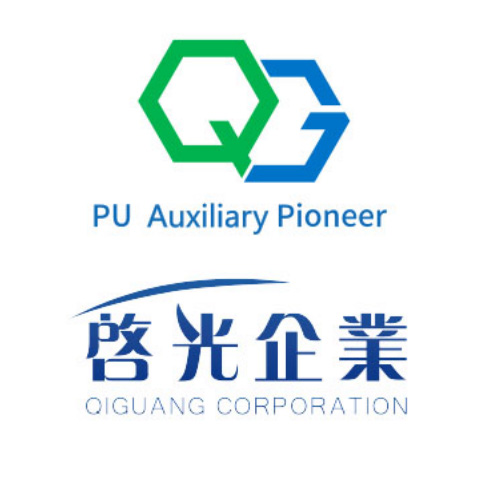The main component of polyurethane foam (PU foam) is polyurethane, the raw material is mainly polyisocyanate and polyol, by adding appropriate additives – the important one is a series of foaming additives related to foaming – so that the reaction products generate The PU foam product is obtained by adding appropriate additives – an important one being a series of foaming additives related to foaming – to produce a large amount of foam in the reaction product.
01

Polyisocyanates
Polyisocyanates commonly used in the production of polyurethane foam industry include toluene diisocyanate (TDI), polymethylene polyphenyl isocyanate (PAPI), diphenylmethane diisocyanate (MDI) and liquefied MDI (L-MDI).
TDI is mainly used in the foam industry for the production of polyurethane flexible foam. The average molecular weight of typical PAPI products is in the range of 30~400, and its NCO mass fraction is 31%~32%. The average functionalities of low-viscosity PAPI are generally in the range of 2.5~2.9. In the foam field, PAPI and modified PAPI are mainly used in the production of various polyurethane rigid foam, and a small amount is used in the production of high resilience soft foam, whole skin foam, and semi-rigid foam.PAPI can be mixed with TDI to make cold-ripened, high resilience foam.
02

Polyether Polyol
Polyether polyols used in the production of polyurethane soft foam are generally long-chain, low-functional polyethers. The functionalities of polyether polyols in soft foam formulations are generally 2~3, and the average molecular weight is between 2000~6500. In the soft foam is used a lot of polyether triol, generally glycerol (propylene glycol) as the starting agent, from 1, 2-epoxypropane ring-opening polymerization or copolymerization with a small amount of ethylene oxide and get, molecular weight generally in 3000 ~ 7000.
Highly reactive polyether is mainly used for high resilience soft foam, but also can be used for semi-rigid foam and other foam products. A small amount of polyether glycol can be used as auxiliary raw materials, mixed with polyether triol in soft foam formulations. Low unsaturated, high molecular weight polyether polyol can be used in the production of soft foam to reduce the amount of TDI. Used in hard foam formulations are generally high functional, high hydroxyl value polyether polyols, so as to produce sufficient crosslinking and rigidity. The hydroxyl value of hard foam polyether polyol is generally 350~650mg KOH/g, and the average functionality is above 3. The average hydroxyl value is around 4000mg KOH/g. The general hard foam formulations are mostly mixed with two polyethers. Semi-hard foam formulations generally use part of high molecular weight polyether, especially high reactive polyether polyol and part of high functional, low molecular weight hard foam polyether.

03
Polyester polyol
Common low-viscosity aliphatic polyester polyols such as poly(diethylene glycol adipate) with a hydroxyl value of about 56 mg KOH/g or polyester polyols with a small number of branched chains can be used to make polyester-based polyurethane soft foam. Polyester polyol is highly reactive. At present, polyester-type PU block foam is only used in a small number of fields such as apparel accessories. Aromatic polyols synthesized from dibasic acids (such as phthalic anhydride, terephthalic acid, etc.) and small molecule diols (diethylene glycol, etc.) or polyols, of which the high hydroxyl value can be used to produce polyurethane rigid foam and polyisocyanurate rigid foam. Lower hydroxyl value phthalic anhydride polyester alcohols can also be used for high resilience soft foam, integral skin foam and semi-rigid foam, as well as non-foam polyurethane materials.
04
Polymer Polyols
Polymer polyols (grafted polyether polyols) contain rigid styrene and acrylonitrile homopolymers and copolymers and grafted polymers, which act as organic “fillers” to improve load-bearing properties. Polymer polyol can be used to produce high hardness soft block foam, high resilience foam, thermal molding soft foam, semi-hard foam, self-crusting foam, reactive injection molding (RIM) products, etc., can reduce the thickness of the product, reduce the density of foam and reduce costs, but also to increase the porosity of the foam, and give the product a certain degree of flame retardant properties. Polyurea polyol (PHD dispersion) is also a special polymer modified polyol, can be used for high resilience soft foam, semi-hard foam, soft foam, there are few products on the market. There are also some special polyols used in the production of polyurethane foam, such as vegetable oil polyol, rosin polyester polyol, polymer polyester polyol.
05
Foaming agent
Water is an important foaming agent in the production of polyurethane materials. It is a chemical foaming agent, which makes the viscoelastic foam materials expand, foam and solidify through the carbon dioxide gas generated by the reaction with isocyanate to obtain various polyurethane foams. Because of the high thermal conductivity of carbon dioxide and its high permeability, physical blowing agents must be used for rigid polyurethane foam formulations that require high adiabatic properties. Because the initial mixing of materials in rigid foam production generates a large amount of heat within tens of seconds, it needs the blowing agent to absorb part of the heat while the vaporization of the blowing agent expands and foams the foam. In the production of polyurethane soft foam, in order to obtain a low density of soft foam, while not too much water caused by foam stiffness, generally need to control the amount of water, add the right amount of physical blowing agent as an auxiliary blowing agent. CFC-11 (trichloromethane) in the late 1920s to achieve industrial production. Because CFC-11 has non-flammable, suitable boiling point, easy gasification, low thermal conductivity of gas phase, low toxicity, good compatibility with polyurethane raw materials, non-corrosive, low price, simple foaming process, etc., it is a very ideal foaming agent in the production of polyurethane foam. Since the 1960s to the early 1990s, CFC-11 was widely used as a foaming agent for polyurethane foam. But in the 1970s scientists found that CFC-11 emitted in the atmosphere can slowly destroy the ozone layer, which has attracted the attention of global environmentalists. Currently, the main types of blowing agents used as alternatives to CFC-11 are HCFC (hydrochlorofluorocarbon), HFC (hydrofluorocarbon), HC (alkane), liquid CO2 and water.
06
Foaming additives
(1) Foam stabilizer
When producing polyurethane foam, foam stabilizer (or foam leveling agent) is an indispensable component. It can increase the mutual solubility of the components, and plays the role of emulsifying foam materials, stabilizing foam and regulating foam pores. Foam stabilizer belongs to the surfactant, there are two types of non-silicone compounds as well as organosilicon compounds. Most of the foam stabilizers currently in use are polysiloxane olefin oxide block copolymers, which are polyether modified silicone surfactants, sometimes commonly known as “silicone oil” in the industry. Because of the wide range of changes in the structural composition of these surfactants, the use of good results, the polyurethane foam industry has been widely used polyether-modified silicone surfactants as foam stabilizers.
(2) Porosity-opening agent
Methods of obtaining open-cell polyurethane foam.
The use of a suitable catalyst, so that the gel reaction and foaming reaction to achieve the required balance, the foam material rises to a high point when the wall film strength of the bubble pore is not enough to close the bubble inside, the gas breaks the wall out, forming an open-hole foam structure; the use of suitable polyether polyol raw materials, the formation of open-hole foam; when the catalyst and the main raw materials are not enough to solve the problem, the use of a small amount of open-hole agent, so that the formation of water foaming urea Dispersion, to obtain a certain porosity of the foam. Porosity-opening agent is a special type of surfactant, generally containing hydrophobic and hydrophilic chain segments or groups, its role is to reduce the surface tension of the foam, to promote the rupture of the bubble pore, to improve the porosity of polyurethane foam, to improve the shrinkage of soft, semi-rigid, rigid foam products caused by closed pore problems. The usual polyurethane rigid foam is generally closed-hole bubble structure due to high cross-link density and high strength of bubble wall film in foaming, but the addition of open-hole agent can make open-hole rigid polyurethane foam for muffling, filtration and other uses. Early hydrophobic liquid paraffin, polybutadiene, dimethyl polysiloxane, etc. can be used as foam stabilizers and open-hole agents, paraffin dispersions, polyethylene oxide can also be used as open-hole agents, and currently more special chemical composition of polypropylene oxide – ethylene oxide copolyether, polyolefin oxide – polysiloxane copolymer, etc. as open-hole agents.
(3) softener
In the high water formula polyurethane soft foam production using softeners, can inhibit the excessive urea group brought about by the foam body stiffness problem. Foam softening modifier with softening effect, the use of softeners can reduce the amount of isocyanate and thus reduce the foam hardness, used in the production of soft polyurethane foam. Commercial softeners generally contain special polyether, special polyol and water.

